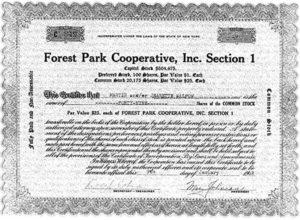June 10, 2016
By Cate Corcoran
Purchasing a home in New York City can be daunting to the uninitiated — and for those looking to buy a co-op, the process is even more intense.
A co-op is a special kind of apartment with its own arcane buying procedure. It’s essential to understand the steps and avoid pitfalls such as working with lenders who don’t make co-op loans.
What is a co-op apartment
First, a quick definition. When you buy a co-op apartment, you are technically buying shares in a corporation, not real property. Your ownership shares entitle you to a proprietary lease, which gives you the right to reside in the apartment.
“Many buyers do not understand the differences between purchasing a coop and a condo or house in the New York City market,†said [Associate Real Estate Broker]. “When you purchase a co-op, you are becoming a shareholder in a corporation.â€
What’s unique about the co-op purchasing process
Anyone preparing to purchase a co-op should be prepared, both mentally and financially, for the undertaking. The main difference from, for example, buying a condo, is that buying a co-op requires board approval.
The purchase process takes longer, you will need to prepare a financial package for the board, and the co-op may have financial requirements of the buyer above and beyond those of a mortgage lender.
A typical time frame for the process is about three months.
An overview of the co-op buying process
1. Line up your team and obtain a pre-approval letter. “Make sure you have your team lined up before you start the process — mortgage broker or banker, engineer, lawyer,†[managing partner and founder of an eponymous real estate law firm based in Brooklyn Heights], told Brownstoner. “You have to be ready to move quickly in this market. Having your team lined up ahead of time shows that you are serious and prepared. Interview everyone — and make sure your are aligning yourself with people who are experienced in New York real estate.â€
2. Identify a co-op apartment you want to buy.
3. Make sure you qualify: You must meet the board requirements for a down payment (typically 20 percent but it can range from 10 percent to all cash) and cash in reserve (often a year of maintenance payments in the bank). Also be sure your plans dovetail with board rules about who can live in the apartment. For instance, many co-op boards prohibit subletting, pied-Ã -terres and parents buying for children (and vice versa), but some are more lenient. This is a good topic to discuss with your broker before you begin the hunt, said Glick.
4. Submit an offer.
5. If your offer is accepted, start preparing your board package and have your lawyer look over the minutes for the building and the building’s financials to ensure everything is sound.
6. Buyer and seller get into contract. Typically the contract will contain a board approval contingency (so the deposit is returned if the buyer does not pass the board). Buyer submits a deposit (10 percent of the purchase price) to the seller’s lawyer to put into escrow until closing.
7. Start the title search and mortgage application process. Be sure to deal only with mortgage brokers and lenders who deal with co-ops in New York City. (Many a buyer has gotten to the end of the process only to be told the lender doesn’t know what a co-op is.)
8. Prepare and submit your board package. You will need financial documents similar to what you already submitted to the lender, as well as personal letters of recommendation.
9. Board interview.
10. Final walk through.
11. Closing. This typically takes about three hours. Present are the seller; buyer; attorneys for the seller, buyer, co-op, and lender; and real estate agents for the seller and buyer. Ownership of the property is legally transferred by the exchange of money and the signing of documents.

Published by